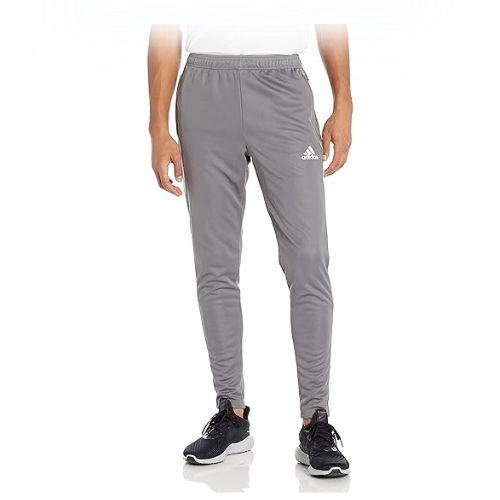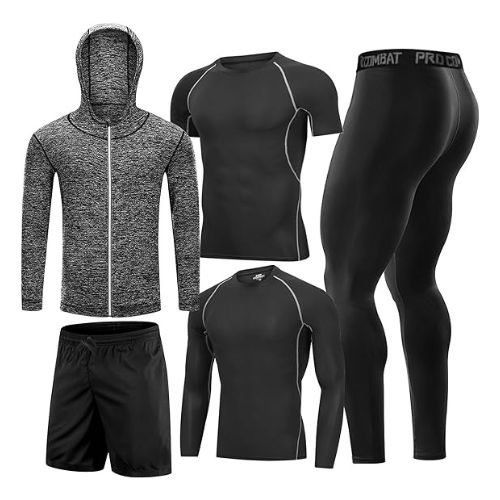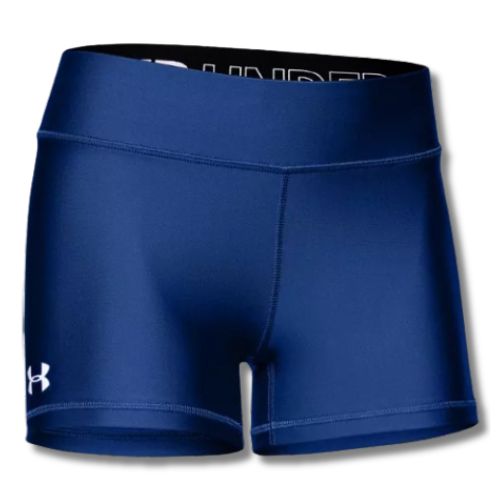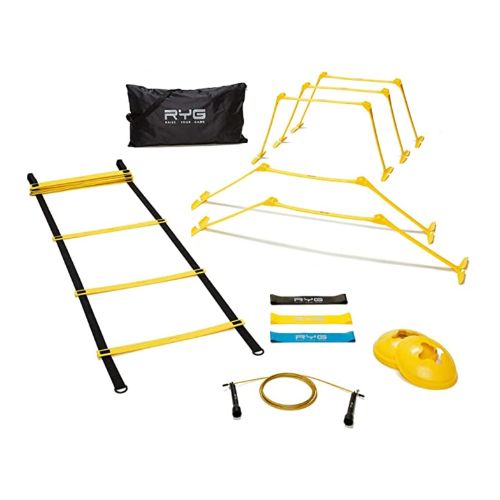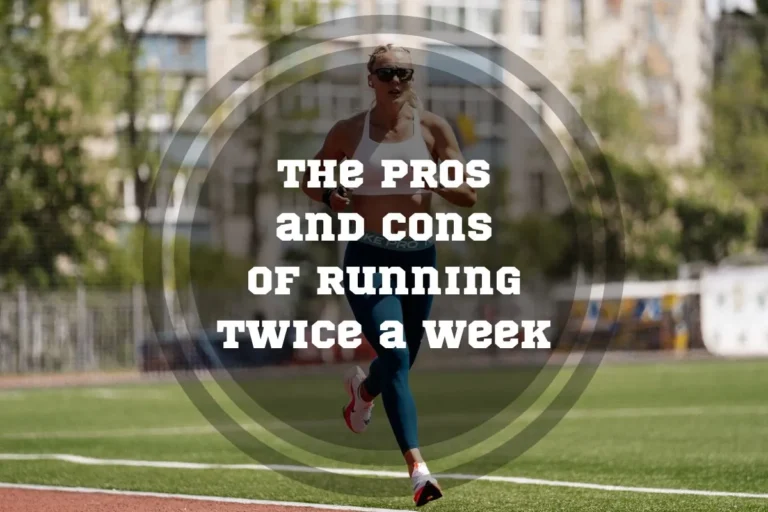How Long Is Track Season? Everything You Need to Know
Track season is a critical part of any running enthusiast’s year, offering opportunities to participate in competitions and enjoy the exhilaration of testing one’s physical limits. But how long is track season?
This blog post will provide information about the length of each type of season, important events for participants and help you understand what gear you need before starting your training.
If you’re ready to find out how long is a track meet and everything about the experience of running on the track throughout the year and enhance your performance, buckle up as we’ll answer all of these questions!
How Long Are Track Meets?
How long is track season? Track season is divided into indoor and outdoor seasons, usually beginning in late February/early March both for high school and college athletes. International indoor track seasons usually last from January until April, and the outdoor track and field season takes place in May-September.
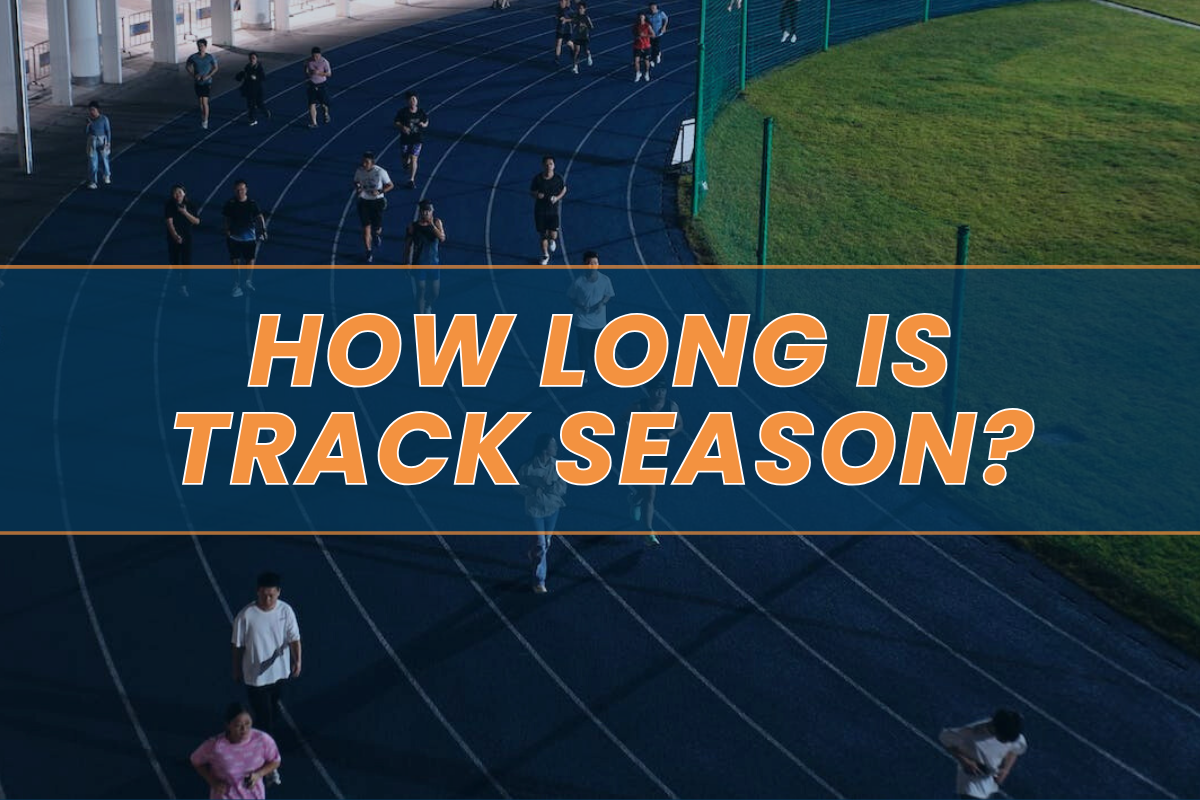
The Track Is Seasonal: What It Means And For Whom It Is Important?
Track is divided into seasons, so athletes can participate in various competitions according to their abilities. Track and field is an inclusive sport for all levels of experience, from seasoned competitors to enthusiastic newcomers.
It’s important to understand why track events are divided in indoor and outdoor seasons. There are a few reasons that impact the runner’s performance, safety, and comfort level.
The temperature of an outdoor stadium can quickly become unbearable if there’s no shade. Seasonal training is key for athletes competing in track meets throughout the year so they can reach peak performance levels come race day regardless of whether it’s indoors or outdoors.
Weather conditions play a huge role in determining when a track season will be held. The reason is that natural surfaces like cinder, clay, or grass can become easily flooded or damaged with rain and ice. These surfaces require more time to recover after inclement weather than all-weather tracks made from rubber or polyurethane. Let’s take a closer look at the 2 main types of tracks:
1. Natural Surfaces
Cinder, clay, and grass are the most common natural surfaces for running tracks. In the past, those were considered cheap when it came to track construction. As a result, they still are used in outdoor athletics today, as softer surfaces like clay and cinder increase ground contact time for runners.
The big downside to these types of tracks is poor drainage, which can cause slippery conditions during wet weather.
2. All-Weather Synthetic Surfaces
The all-weather track surfaces, such as rubber and polyurethane, are designed to provide long-term durability with minimal maintenance. Their weatherproof surface is resilient to seasonal weather conditions no matter the season.
Polyurethane track systems in particular have been known to last for up to 30 years with regular maintenance. However, these tracks must be properly maintained by keeping debris off of them and using appropriate repair techniques when damage does occur.
Rubber is one of the most common materials used for artificial running tracks thanks to its ability to remain in great condition for 20 years or more when properly constructed and maintained.
Additionally, these all-weather surfaces offer faster times that allow athletes to achieve peak performance levels with each practice session.
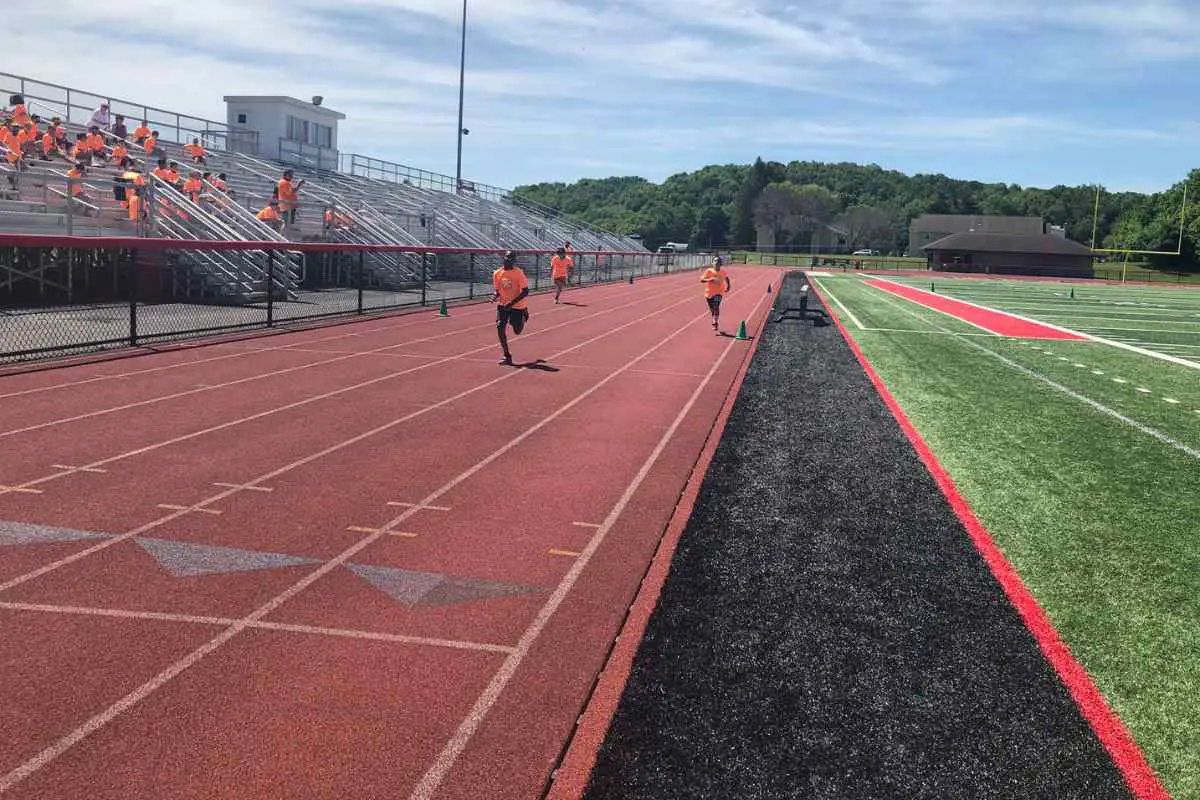
When Is Track Season?
How long is track season in high school? When does it start for the international league? Depending on where you live and your season, track meets may start anywhere between late March and early April. Let’s discuss the details:
1. Season for Outdoor Track
The outdoor track and field season is the highlight of the year for most athletes. The table below shows the outdoor track season start and end for different leagues:
| League | Season start | Season end |
|---|---|---|
| High school | March | June |
| College | March | June |
| International | May | September |
During this season, athletes compete in sprinting events like the 100m dash, middle-distance races like the one-mile run, jumping events, and throwing events.
2. Season for the Indoor Track
When is indoor track season? Indoor track season is a great time for athletes to perfect their routines and makes them competitive in the most important events. Starting in December or January, it concludes by the end of March or April with the indoor track championships.
| League | Season start | Season end |
|---|---|---|
| High school | December | March |
| College | December | March |
| International | January | April |
This period differs from outdoor track season, which usually includes longer distances due to more space outside of the arena setting.
General Track Events
Track and field events are varied, covering a range of sports from sprinting to relays and hurdling. They require physical strength and discipline to ensure that the athletes compete in their respective event with skill and agility. All these kinds of exercises are used in high school, college, and international events in different combinations.
1. Sprint Events
Sprinting events require athletes to focus on developing explosive speed, power, and agility. Common short distances include 100m, 200m, and 400m.
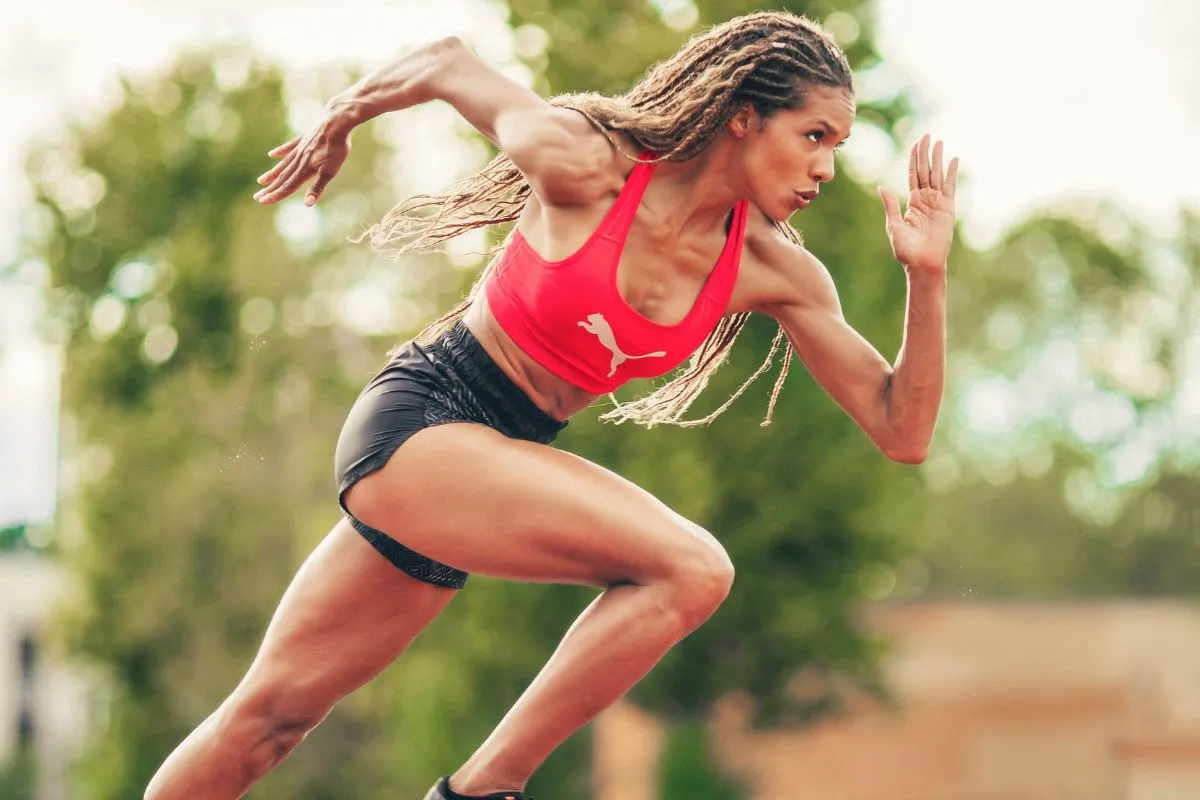
2. Middle-Distance Events
Middle-distance events are longer than sprints, typically spanning 400m to 3000m. The most common middle-distances in track events are the 800m, 1500m, and 3000m.
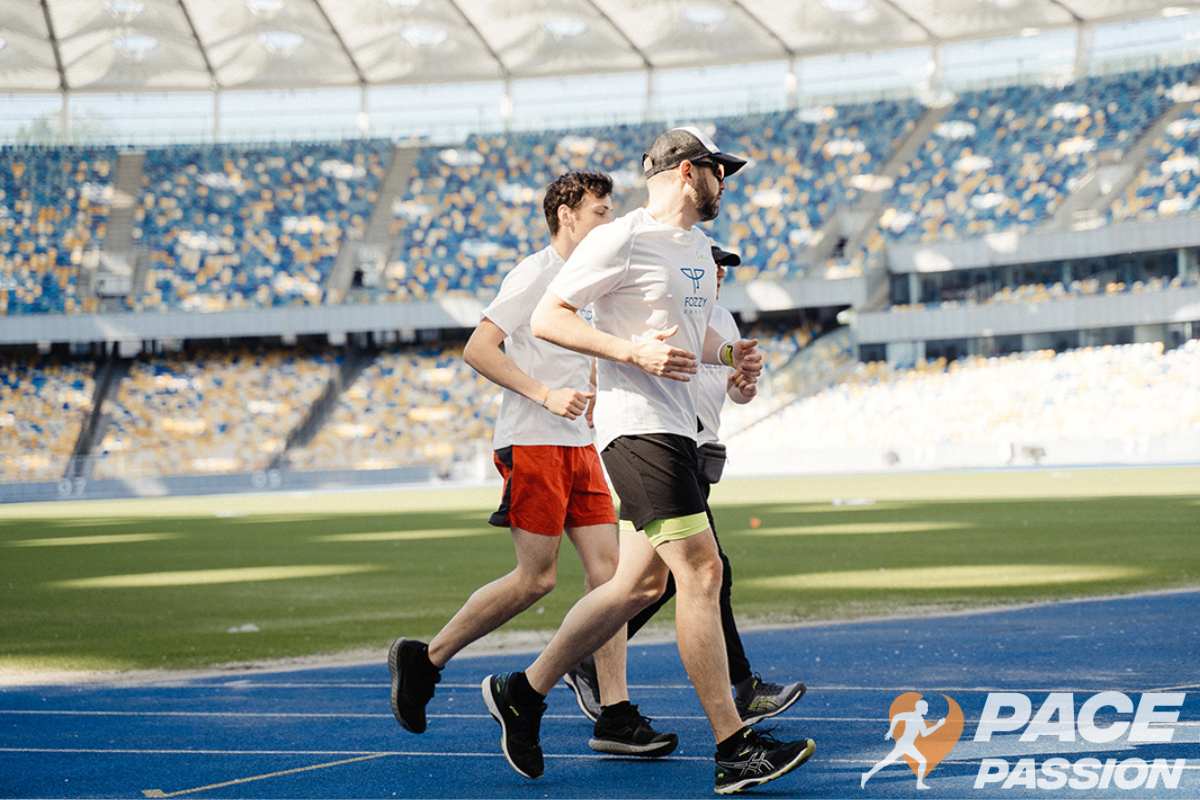
3. Long-Distance Events
Long-distance running usually covers the distances of at least 3km. Track events for long-distance running include 5km and 10km races on a track as well as the marathon.
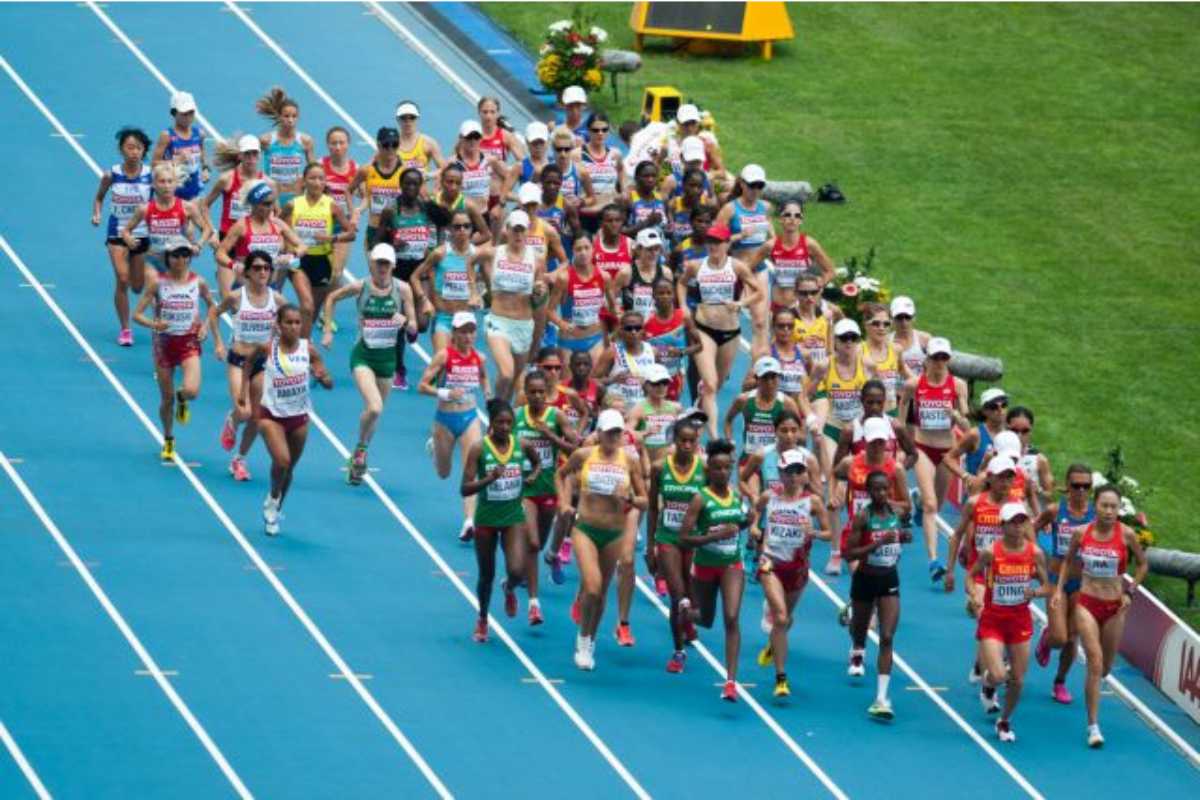
4. Relay Events
A relay race is an event where athletes run a set distance with a baton, which is passed from one runner to the next. Teams typically consist of four runners. The traditional last event at most track meets is often a relay race, like the 4x100m or 4x400m.
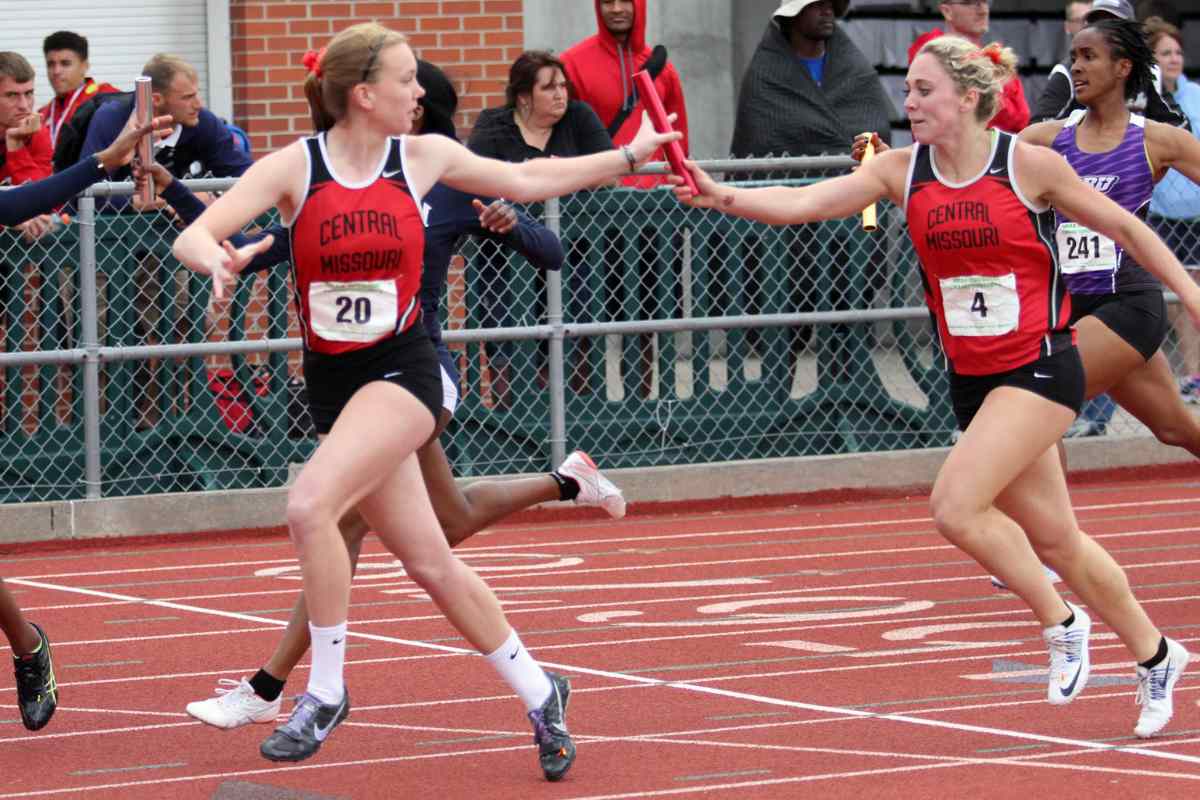
5. Hurdling Events
Hurdling events in track and field involve leaping over one or more obstacles in a race. Ideally, a hurdler will move from hurdle to hurdle, vaulting cleanly without interrupting their stride. Hurdle events are typically divided into different distances, ranging from 60m to 400m.
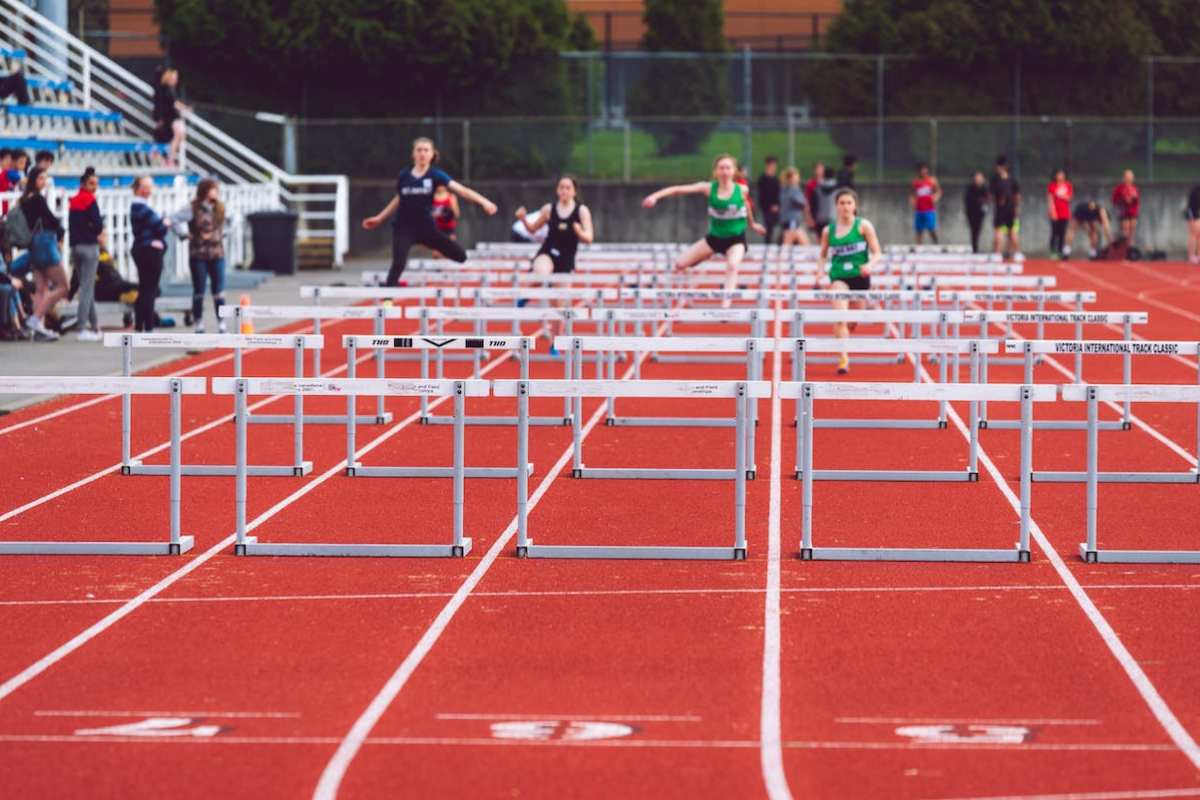
6. Throwing Events
Throwing events involve athletes attempting to propel an object for the farthest distance. These events include:
- shot put, where competitors throw a metal ball;
- discus, where contestants hurl a frisbee-shaped plate across the field;
- hammer throw, which involves throwing a steel ball attached to a wire down and out in front of the competitor;
- javelin, which requires players to hurl a spear as far as possible.
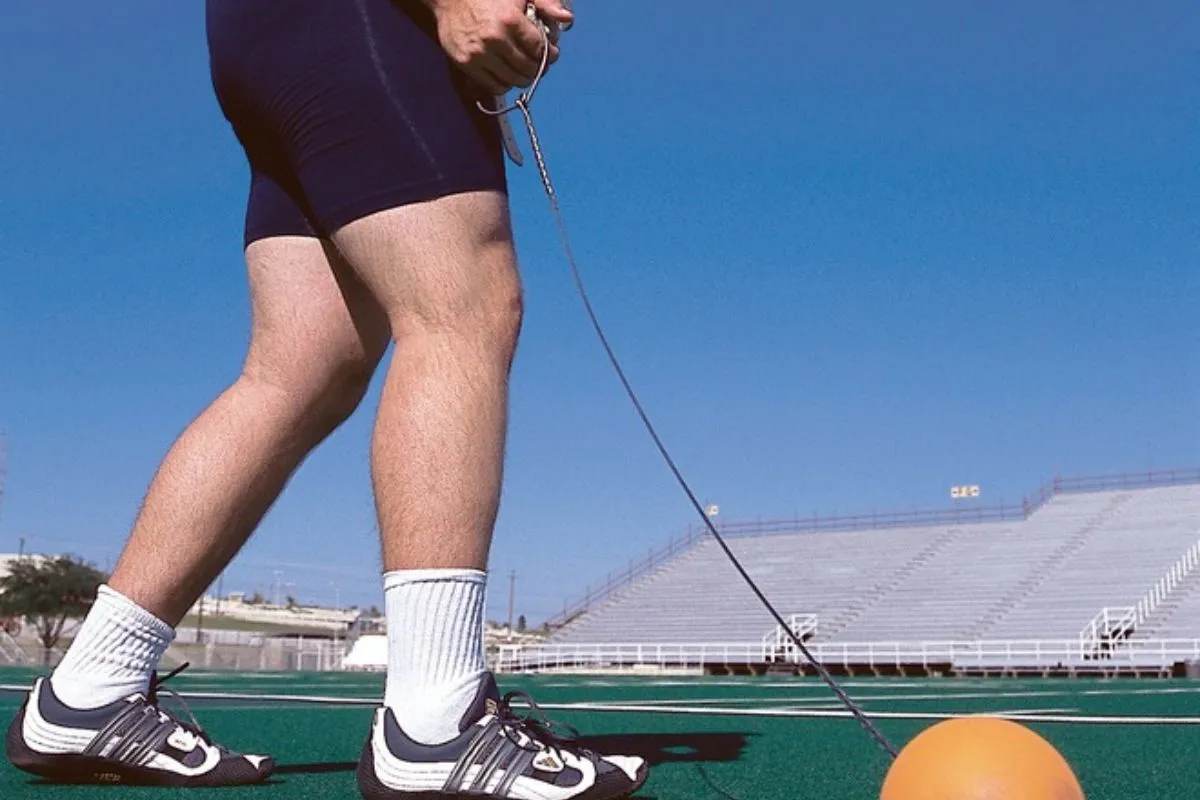
7. Jumping Events
Jumping events comprise one leap only, so it requires precise technique, body control, timing, and accuracy. Jumping usually includes four main types of exercise: long jump, pole vault, high jump, triple jump.
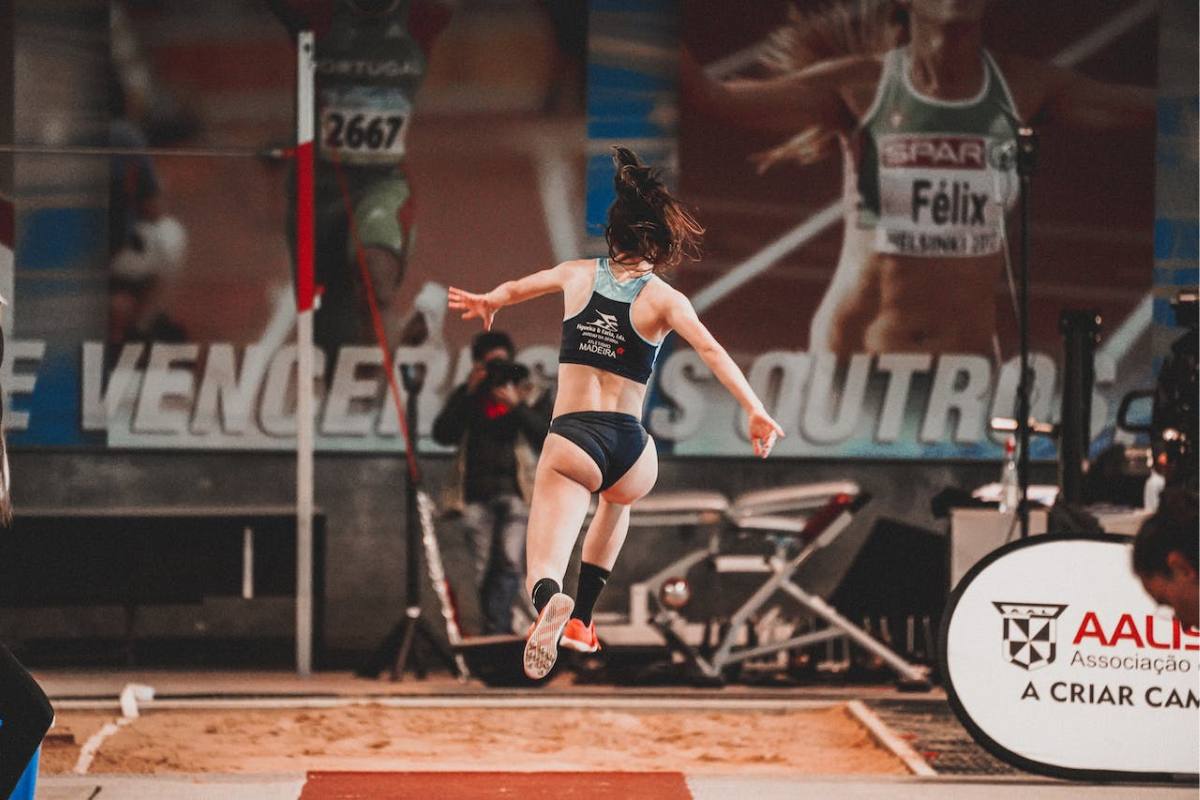
What Are the Most Difficult Events?
In track and field, some events tend to be more difficult than others. The 400m hurdles are often considered the most difficult event on the track, as it combines a sprinting effort with hurdling technique and agility. The challenge stems from its combination of efforts: it requires both traditional sprinting speed and greater amounts of technical skill when negotiating each hurdle during the race.
Additionally, many runners find pole vault or long jump challenging due to the technical skill required for success at these events.
What Equipment and Gear Is Necessary for Training on the Track?
All kinds of athletes, from beginners to the experienced ones, need good and quality running gear and equipment for their training. Here are some basic items that can help you perform your best on the track:
1. Comfortable Running Shoes
Having an appropriate pair of running shoes is essential for every runner to maximize their training sessions and performance on the track. Comfort plays a major role in how well you can perform.
Different distances and intensities may require different types of cushioning depending on the impact forces experienced during running. Long-distance runs tend to have softer cushions due to increased shock absorption needed at higher speeds, while sprints would benefit more from stiffer materials that offer better responsiveness.

Pro Tip:
Proper cushioning helps protect your feet from the intensity of contact with hard surfaces, minimizes energy loss, improves comfort levels while running, and reduces the risk of injury.

Pro Tip:
Proper cushioning helps protect your feet from the intensity of contact with hard surfaces, minimizes energy loss, improves comfort levels while running, and reduces the risk of injury.
2. Track Spikes
Spikes provide excellent traction on the surface, allowing runners to accelerate faster and run more efficiently. Track spikes should be securely fastened with pins at least a quarter inch long, but athletes must follow rules related to the length and type of spike they use accordingly.
The best way for athletes to find out what spike is right for them is by testing different brands, as it helps them determine their needs depending upon the surface of a particular race course.
Subscribe to Our Running Newsletter!
Get free running tips from renowned professional athletes and discounts from top-notch brands.
3. Running Socks
Running socks are an essential part of a runner’s wardrobe when it comes to track and field season. Comfort, cushioning, breathability, and other necessary features in running footwear can only be provided with the right pair of running-specific socks.
Since mileage during training and competition is often higher than typical running distances, runners need performance-boosting properties from their socks.
4. Track Wear
When it comes to running on the track, having the proper equipment is essential. The right gear and clothing not only provides comfort and enhances performance but can also ensure runners stay safe while engaging in rigorous training for their sport.
Here are our recommended track wear items for both male and female athletes:
Best Universal Pant
Adidas Men’s Tiro 21 Track Pants
The Adidas Track Pants are essential for athletes looking for a pant that delivers on style and performance. Whether you’re running the track, soccer sidelines, or gym trips, these pants will offer comfort and coverage with their regular fit design.
Ankle zips, ribbed lower legs, and wraps on the elastic waistband make them adjustable depending on how tight you want to wear them during your session. With these track pants, you don’t need to worry about ill-fitting pants ever again.
Best Workout Sets
From Flatlock seams to UV protection, BoomCool gym clothes workout sets provide runners with all the gear and features they need in one package. Made of breathable yet durable fabrics, these sets are designed specifically for running and other outdoor sports.
With shirt crops and compression tops meant to keep you cool throughout your workout session, a range of shorts offer either light or high-ends support when needed. And with freedom of movement built into every piece, this collection is perfect for long days at the track or on back trails.
Super-Lightweight
Under Armour Women’s Team Shorty 3
Are you looking for the perfect running shorts? Then look no further than Under Armour Women’s Team Shorty 3. These lightweight and stretchable training shorts are designed with HeatGear fabric that wicks sweat quickly and keeps the skin dry during your workouts.
Its super-lightweight material is flexible enough to move with you while running on the track and providing extra comfort throughout your runs. The four-way stretch fabric allows freedom of movement in all directions, helping runners achieve their goals without any hindrance caused by restrictive clothing.
Best Training Set
Raise Your Game training set is designed to enhance speed and agility training for athletes. It provides everything track runners need to improve their performance, including an agility ladder, 5 hurdles, 8 cones, a jump rope, and 3 latex resistance bands.
The set is ideal for warm ups and cool downs, as it allows you to perform various drills to boost your overall fitness.
How to Prepare for Seasonal Track Running?
To be successful in track and field season, you must prepare for it with various endurance, interval, and strength training exercises. Explore different exercises to help you get into shape throughout the off-season:
1. Fartlek Training
Fartlek training is an effective and creative way of challenging the body to become faster over longer distances. Fartlek, which is Swedish for “speed play,” combines aerobic intervals with speed work while allowing a runner more flexibility than traditional training.
The principle behind fartlek training is to enable the body to adapt to various speeds gradually, ultimately increasing running performance. A typical fartlek run involves alternating between difficult efforts for short periods of time followed by easy recovery jogs, then repeating this pattern throughout your cardio session.
2. Hill Repeats
Hill repeats are an excellent way to build strength, improve speed and confidence for runners. By combining power-working drills with strong running form, hill repeats can help the runner achieve tremendous gains in performance. To do this workout, you need to sprint up a steep incline and then jog or walk back down.

Pro Tip:
This type of repeat session should last at least 6 weeks during the winter months to help make the most progress as possible before track season.

Pro Tip:
This type of repeat session should last at least 6 weeks during the winter months to help make the most progress as possible before track season.
3. 800/400-Meter Repeats
Interval training can help to improve a runner’s middle-distance performance, and is especially valuable in the case of 800/400m repeats. These repetition runs focus on running at a faster pace than your regular race for 800m before returning to slower-paced jogging for 400m.
Tempo runs that include 400 meters followed by strength exercises off the track can have great impact as well. This type of training helps build greater aerobic capacity and better lactic acid tolerance over time.
4. Strength Training
One of the most important elements to any successful track and field performance is strength training, which focuses on developing endurance and speed in an individual athlete or team as part of a regular physical activity routine.
It can be used to increase muscle size and power, enhance metabolism rate and boost psychological stamina. It also helps improve motor skills such as coordination, balance, and agility and reduce risk for injury.
5. Build Core Strength
Core strength is essential for runners, as it contributes to overall athletic performance and helps with movements necessary while running. Without adequate core stability, a runner would put themselves at risk of sustaining an injury.
Additionally, having good core muscles can help maximize work capacity and recovery between event performances.
6. Listen to Your Body and Go at Your Own Pace
During track and field season, it is important for athletes to listen to their bodies and adjust accordingly. By paying attention to fatigue, pain, motivation, and mental state during training, you can prevent injury as well as maximize your performance.
Tuning into your body’s signals might mean jogging at a slower pace than usual or stopping if you’re feeling overly tired or unwell. If the body sends signs that suggest pushing through would be detrimental rather than beneficial, then don’t hesitate to take a rest day instead of pushing too hard.
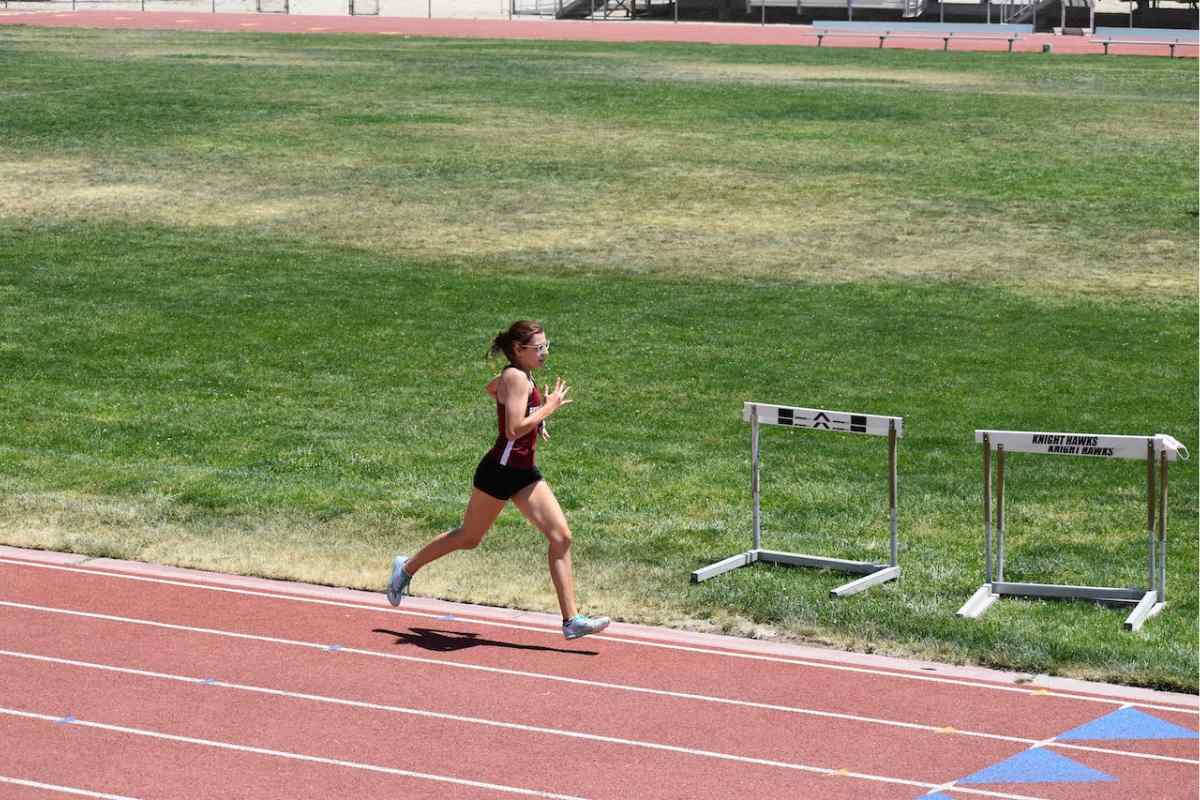
Frequently Asked Questions about Track and Field Season
How Long Is the Olympic Track?
Olympic track has a long and rich history, dating back to the first Olympic race held in Greece in 776 B.C. This race was 600 feet long and marked the dawn of competitive running. Since then, modern outdoor tracks have evolved into ovals 400 meters long and with each lane measuring 400 meters as well.
Is Cross Country in the Fall or Spring?
Cross country running typically takes place in the fall months. In the United States, cross country season falls between early September and late October, depending on the region.
Can Athletes Participate in Several Competitions?
Many track and field athletes participate in multiple events, including sprints, jumps, throws, middle-distance running, and sometimes cross country or road races.
What Is the Difference Between Track and Cross Country?
Track and cross country are two running disciplines that, while sharing some similarities, also offer runners distinct challenges. Track training is more focused on speed work and technique in an effort to decrease run times over shorter distances. Cross country races typically span longer distances than track events, with most popular distances of 5km, 6km, 8km, and 10km.
Final Thoughts: How Long Is Track Season?
How long is the track and field season? Track season typically runs from early winter to mid-spring for both high school and college athletes. The exact start date can vary by location, with some places starting as early as late December and others not beginning until February or March.
Indoor track season starts at the end of February and ends in mid-April, while outdoor track meets usually begin in April or May. Each event also differs in length depending on type; for instance, sprints end quickly compared to long-distance runs, which require multiple laps for completion.
Regardless of when does track start and event type, all participants must prepare ahead for their events accordingly if they want to have great results out on the track!
Have you ever participated in any track events? Do you have any tips to prepare for track season? Please share your experience in the comments below.
Also read:
References:
- Codi A. Ramsey, Peter Lamb, Daniel Cury Ribeiro, “Factors Influencing Runner’s Choices of Footwear,” Frontiers in Sports and Active Living 4 (2022), https://doi.org/10.3389/fspor.2022.829514.
- Kimitake Sato, Monique Mokha, “Does Core Strength Training Influence Running Kinetics, Lower-Extremity Stability, and 5000-M Merformance in Runners?” Journal of Strength and Conditioning Research 23, no. 1 (2009): 133-140, doi: 10.1519/JSC.0b013e31818eb0c5
- Kuno Hottenrott, Sebastian Ludyga, Stephan Schulze, “Effects of High Intensity Training and Continuous Endurance Training on Aerobic Capacity and Body Composition in Recreationally Active Runners,” Journal of Sports Science & Medicine 11, no. 3 (2012): 483-488.
- Laura Healey, Montgomery Bertschy, Shalaya Kipp, Wouter Hoogkamer, “Can We Quantify the Benefits of ‘Super Spikes’ in Track Running?” Sports Medicine 52, no. 6 (2022): 1211-1218.
- Pablo Prieto-González, Jaromir Sedlacek, “Effects of Running-Specific Strength Training, Endurance Training, and Concurrent Training on Recreational Endurance Athletes’ Performance and Selected Anthropometric Parameters,” International Journal of Environmental Research and Public Health 19, no. 17 (2022): 10773.
If you have any questions or suggestions, you can contact us via email – [email protected]

